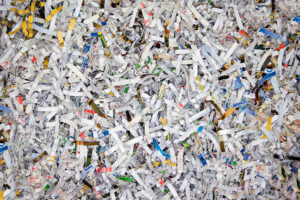The management of regulated medical waste is subject to a complex web of regulations and guidelines aimed at protecting public health and the environment. Healthcare providers play a pivotal role in ensuring compliance with these regulations to safeguard the well-being of patients, staff, and the community. In this article, we will explore the various regulations surrounding regulated medical waste and provide insights on how healthcare providers can stay compliant while effectively managing this critical aspect of their operations.
Understanding Regulated Medical Waste (RMW)
Regulated medical waste, often referred to as biohazardous waste or infectious waste, encompasses materials generated in healthcare facilities that may pose a risk of infection or injury. This includes items like used sharps, contaminated dressings, cultures, and other potentially infectious materials.
Regulations Governing Regulated Medical Waste
- Federal Regulations: In the United States, the Environmental Protection Agency (EPA) and the Occupational Safety and Health Administration (OSHA) play key roles in regulating RMW. EPA oversees the disposal of RMW, while OSHA focuses on worker safety, including safe handling and disposal practices.
- State and Local Regulations: Many states have their own specific regulations governing the management and disposal of RMW. These regulations can vary significantly from state to state and may include requirements related to storage, transportation, and treatment.
- Transportation Regulations: The transportation of RMW is subject to additional regulations enforced by agencies like the Department of Transportation (DOT). These regulations cover packaging, labeling, and the qualifications of transport personnel.
How Healthcare Providers Can Stay Compliant
- Educate Staff: Ensure that all healthcare staff members are well-informed about RMW regulations and safe handling practices. Training programs and ongoing education are essential.
- Segregation: Properly segregate RMW from non-hazardous waste at the source. Use color-coded containers and labels to distinguish RMW from other waste streams.
- Use Certified Containers: Employ certified sharps containers and biohazard bags that meet regulatory standards. Ensure containers are sealed, puncture-resistant, and leak-proof.
- Document Compliance: Maintain detailed records of RMW generation, transportation, treatment, and disposal. Proper documentation is crucial for audits and inspections.
- Contract with Reputable Service Providers: Partner with licensed and reputable medical waste service providers who are well-versed in RMW regulations. These providers should handle transportation, treatment, and disposal in compliance with all applicable rules.
- Stay Informed: Keep up-to-date with changing regulations at the federal, state, and local levels. Regularly check official government websites, attend industry conferences, and network with peers to stay informed.
Resources for Regulatory Information
Healthcare providers can access regulatory information from various sources:
- EPA Website: The EPA website provides information on federal regulations related to RMW management and disposal.
- OSHA Guidelines: OSHA offers guidelines and resources on worker safety and infection control practices.
- State Health Departments: Contact your state’s health department or environmental agency for state-specific regulations and guidance.
- Professional Associations: Industry-specific associations often provide resources and updates on RMW regulations. These associations may also offer training and educational materials.
Conclusion
Compliance with regulations surrounding regulated medical waste is not just a legal obligation but a crucial aspect of providing safe and responsible healthcare. Healthcare providers must stay informed, educate their staff, and work closely with reputable service providers to ensure compliance with federal, state, and local regulations. By adhering to these guidelines and staying proactive in their approach, healthcare facilities can effectively manage RMW while safeguarding public health and the environment.










